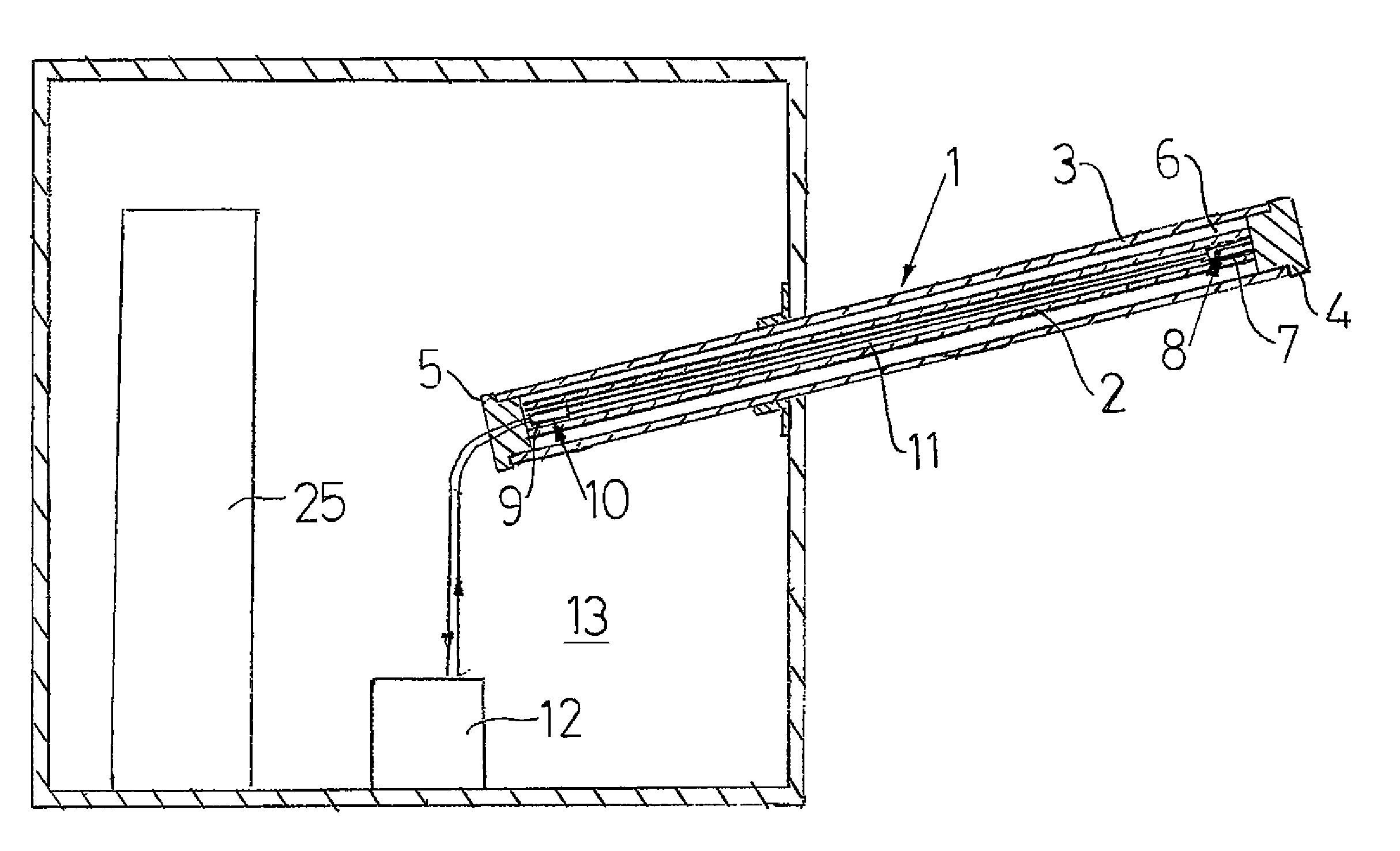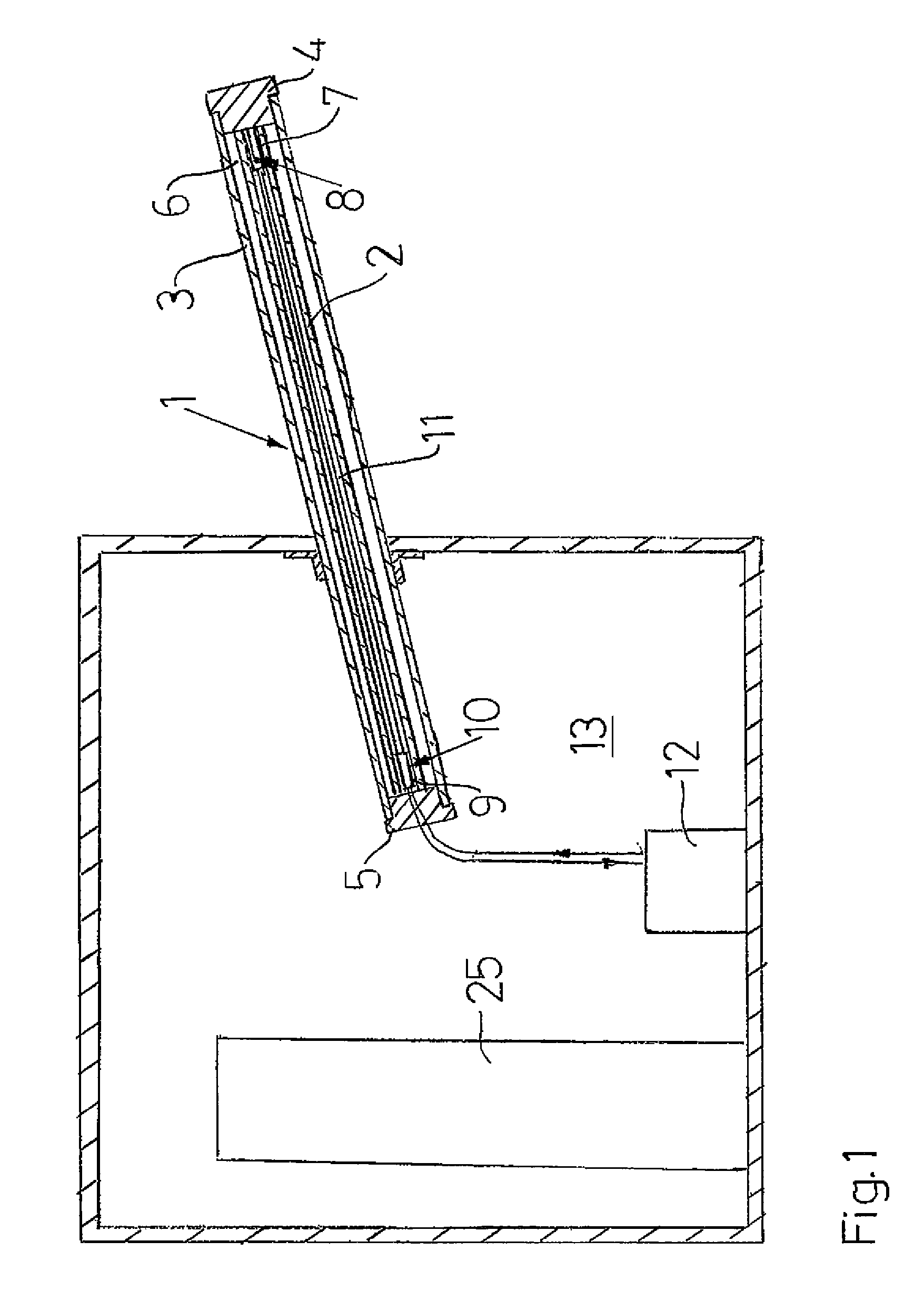High voltage bushing, a method of cooling a conductor thereof, and an electric power distribution system comprising such a bushing
a technology of high voltage bushings and conductors, which is applied in the direction of power cables, cables, electrical apparatus construction details, etc., can solve the problems of increasing losses, increasing weight, and so as to increase the level of electric current without increasing the load on the conductor thereof too much
- Summary
- Abstract
- Description
- Claims
- Application Information
AI Technical Summary
Benefits of technology
Problems solved by technology
Method used
Image
Examples
Embodiment Construction
[0036]FIG. 1 shows a bushing 1 according to the invention. The bushing is an UHVDC wall bushing, which is a bushing adapted for use in power distribution systems operating with very high voltages, i.e. above 300 kV and even up to 800 kV (and the voltages will probably increase even further in the future). The bushing 1 is of a very long (in the range of 10-20 meters) and slender type, which in its operative position is supposed to extend in a direction other than vertical, and preferably also other than horizontal. Thereby, there will be certain requirements on the ability of the bushing 1 and individual parts thereof to carry its own weight and the bending forces induced by the latter, not only under normal circumstances but also under exceptional circumstances such as seismic disturbances. Therefore, the bushing 1 and separate parts thereof should have a rather high strength / weight ratio or stiffness / weight ratio.
[0037]The bushing 1 comprises an elongated tubular conductor 2 and a...
PUM
 Login to View More
Login to View More Abstract
Description
Claims
Application Information
 Login to View More
Login to View More - R&D
- Intellectual Property
- Life Sciences
- Materials
- Tech Scout
- Unparalleled Data Quality
- Higher Quality Content
- 60% Fewer Hallucinations
Browse by: Latest US Patents, China's latest patents, Technical Efficacy Thesaurus, Application Domain, Technology Topic, Popular Technical Reports.
© 2025 PatSnap. All rights reserved.Legal|Privacy policy|Modern Slavery Act Transparency Statement|Sitemap|About US| Contact US: help@patsnap.com



